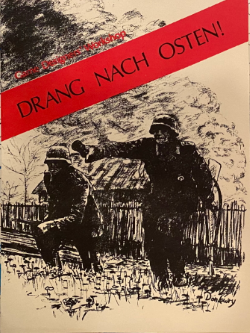
Drang Nach Osten! is a monster board wargame published in 1973 by Game Designers' Workshop (GDW) that simulates Operation Barbarossa, the German invasion of the Soviet Union in 1941. The game was the first of what was envisioned as a series of games with identical wargame rules and map scale that would simulate the entire Second World War in Europe.

1776, subtitled "The Game of the American Revolutionary War", is a board wargame published by Avalon Hill in 1974 that simulates the American Revolutionary War. Its release was timed to coincide with the bicentenary of the Revolution, and for several years was a bestseller for Avalon Hill.

The Arab-Israeli Wars, subtitled "Tank Battles in the Mideast 1956–73", is a board wargame published by Avalon Hill in 1977 that simulates various battles during the Suez Crisis, Six-Day War and Yom Kippur War.

John Evans Hill was an American designer of military board wargames, as well as rules for miniature wargaming. He is best known as the designer of the Avalon Hill board game Squad Leader and the American Civil War miniatures game Johnny Reb. He was inducted into the Charles Roberts Awards Hall of Fame.

Chinese Farm, subtitled "Egyptian-Israeli Combat in the '73 War", is a board wargame published by Simulations Publications, Inc. (SPI) in 1975 that simulates operational level ground combat between Egypt and Israel at the Battle of The Chinese Farm during the just completed Yom Kippur War of October 1973. Chinese Farm was originally published as part of the "quadrigame" Modern Battles: Four Contemporary Conflicts.

Golan subtitled "Syrian-Israeli Combat in the '73 War", is a board wargame published by Simulations Publications, Inc. (SPI) in 1975 that simulates operational level ground combat between Egypt and Israel on the Golan Heights during the just completed Yom Kippur War of October 1973. Golan was originally published as part of the "quadrigame" Modern Battles: Four Contemporary Conflicts.
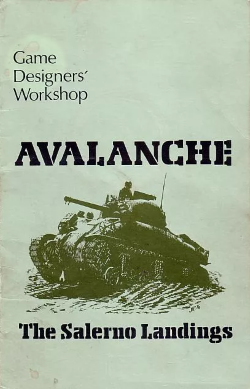
Avalanche: The Salerno Landings is a board wargame published by Game Designers' Workshop (GDW) in 1976 that simulates the nine-day battle for the beachhead at Salerno in September 1943 following the Allied amphibious landing known as Operation Avalanche.

Narvik: The Campaign in Norway, 1940 is a board wargame published by Game Designers' Workshop (GDW) in 1974 that simulates Operation Weserübung, the German invasion of Denmark and Norway during World War II. The game was one of the first in the Europa series of twenty interlocking games envisioned by GDW that would cover the entire European and North African theatres from the start to the end of World War II, using identical map scales and similar rules.

The American Civil War: 1861–1865 is a board wargame published by Simulations Publications Inc. (SPI) in 1974 that is a strategic simulation of the American Civil War.

Crimea: The Dawn of Modern Warfare is a board wargame published by Game Designers' Workshop (GDW) in 1975 that simulates the Crimean War.

Jerusalem! Tactical Game of the 1948 War is a board wargame published by Simulations Design Corporation (SDC) in 1975 that simulates the 1948 Arab–Israeli War.

MechWar '77, subtitled "Tactical Armored Combat in the 1970s", is a board wargame published by Simulations Publications Inc. (SPI) in 1975 that simulates hypothetical tank combat in the mid-1970s between various adversaries, using the same rules system as the previously published Panzer '44.
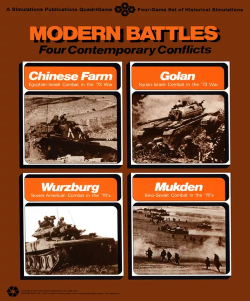
Modern Battles: Four Contemporary Conflicts is a collection of four board wargames published by Simulations Publications Inc. (SPI) in 1975 that simulates four modern-day battles set in the early 1970s.

Battle for Midway: Decision in the Pacific, 1942 is a board wargame published by Game Designers' Workshop (GDW) in 1976 that simulates the Battle of Midway during World War II.
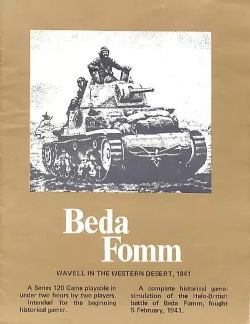
Beda Fomm, subtitled "Wavell in the Western Desert, 1941", is a board wargame published by Game Designer's Workshop (GDW) in 1979 that simulates the Battle of Beda Fomm during World War II. The game was part of GDW's "120 System", games that contained 120 counters, and supposedly could be played in 120 minutes.
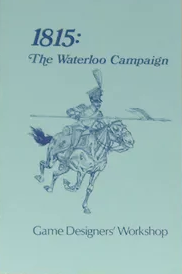
1815: The Waterloo Campaign is a board wargame published by Game Designers' Workshop (GDW) in 1975 that simulates the final three days of Napoleon's last campaign, culminating in the Battle of Waterloo. Reviewers characterized the game as not too complex, playable, fast-moving, and enjoyable. The game was found to be tilted in favor of the French, and GDW released a second edition in 1982 that addressed that issue.
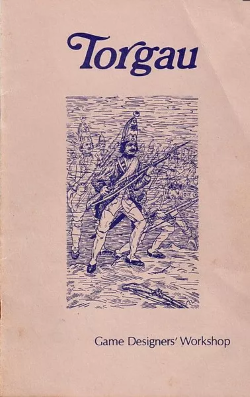
Torgau is a board wargame published by Game Designers' Workshop (GDW) in 1974 that simulates the Battle of Torgau between Prussias and Austrians in 1760 during the Seven Years' War, a costly battle for both sides. Reviews were generally favorable, although gameplay was characterized as very long, complex, and more similar to traditional miniatures wargaming than board wargames.

Leyte: Return to the Philippines, October 1944 is a board wargame published in 1975 by Simulations Publications Inc. (SPI) that simulates the return of General Douglas MacArthur to the Philippines during World War II. The game was originally published as part of the four-game collection Island War: Four Pacific Battles, but was also released as an individual game. Leyte was not considered an outstanding success by critics.
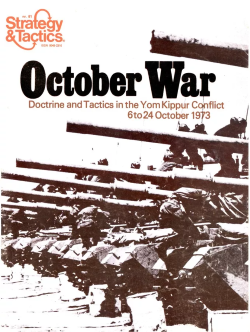
October War: Doctrine and Tactics in the Yom Kippur Conflict, 1973 is a board wargame published by Simulations Publications, Inc. (SPI) in 1977 that simulates the Yom Kippur War.
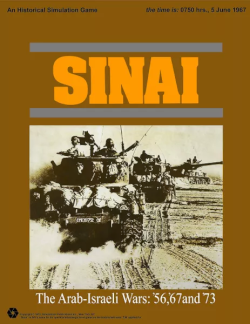
Sinai: The Arab-Israeli Wars – '56, '67 and '73 is a board wargame published by Simulations Publications Inc. (SPI) in 1973 that simulates three conflicts in the Middle East: The 1956 Suez Crisis, the 1967 Six-Day War, and the just-completed 1973 Yom Kippur War. The staff of SPI had been developing a wargame simulating a hypothetical Middle East conflict when war broke out in October 1973. Using newspaper and television reports, SPI found that their envisioned simulation was not accurate, and quickly redeveloped the game, releasing it only weeks after a ceasefire had been signed. The game proved very popular, and remained a best-seller for SPI during the 1970s.




















